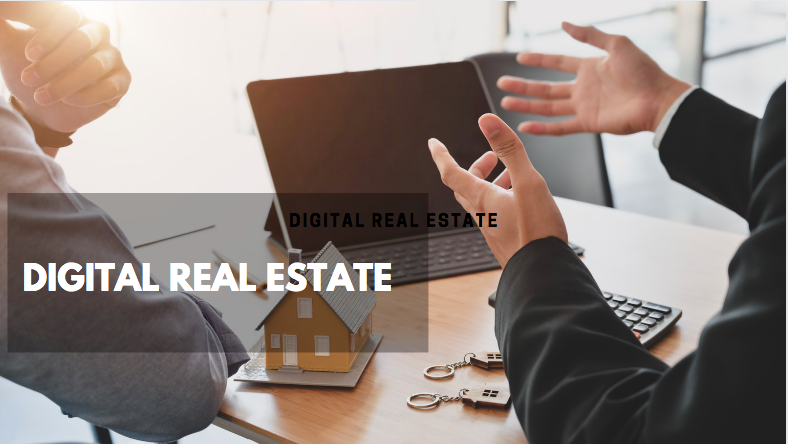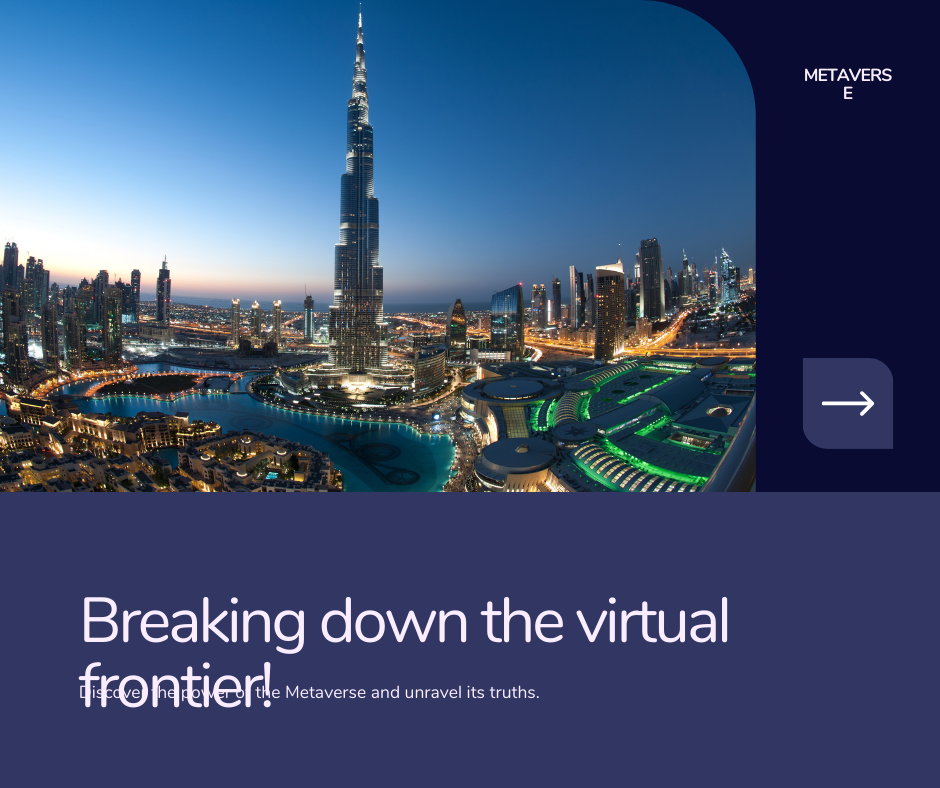Virtual platforms such as Decentraland and OpenSea are offering digital real estate for sale, and we were caught off guard by the phenomenon. Both are online marketplaces where users may now purchase and sell digital assets such as music, art, fashion products, and, most recently, real estate, among other things.
In many ways, the concept of valuing assets in the digital era is still relatively new to most of us.
You might be asking what kind of applications non-tangible real estate could potentially have.
In order to fully comprehend the metaverse, we must first recognize that its users will begin to build identities inside it as the metaverse progresses (similar to what we see with avatars in video games).
In the same manner that these avatars will require clothing to wear, they will also require destinations to visit in the metaverse to complete their journey. That’s where the concept of digital real estate comes in.
What is the Metaverse, and how does it work?
As a result of Facebook’s announcement that it would be entering the metaverse, information about this new location has travelled quite quickly.
Although virtually everyone on the internet has heard of the metaverse, few people are aware of how it truly works, owing to the fact that it is “new.”
The metaverse is best described as a digital parallel reality in which users go to work, engage in leisure activities, and maintain digital identities, among other things.

It’s essentially the next iteration of the internet, combining components of virtual and augmented reality to imitate real-life experiences in a virtual environment. (It is also referred to as Web 3.0 in some circles.)
There have been many years of discussion about the metaverse as a concept.
However, it has only recently gained prominence as a result of the commercial opportunities that have emerged as a result of Facebook’s announcement of its acquisition.
A business opportunity that falls under this category is the purchase and sale of digital real estate.
In these virtual worlds, our digital identities (or avatars) will be able to interact with one another. It is anticipated that as more users enter the metaverse, there will be a greater need for digital real estate to accommodate their activities.
What are the benefits of investing in a virtual land or real estate?
Any real estate investor will tell you that the return on their investment is at the heart of their motivations.
A return on their investment is what investors expect, whether they’re investing in a community-based project that will create jobs in an underserved district or erecting a 50-story skyscraper in New York City for commercial usage.
So, what is the return on investment in digital real estate?
There are a plethora of prospects for digital real estate investors depending on what you want to do with your property. Because virtual land is purchased and sold in cryptocurrency, those with prior experience in cryptocurrency trading will have a distinct advantage.
The metaverse allows investors to acquire plots of property on which they may develop whatever they want, whether it’s a performance venue for hosting music concerts or a co-working space for hosting business meetings.
A tangible example is Snoop Dogg’s “Snoopverse,” which is currently being developed on the Sandbox, a virtual reality platform centred toward gaming and entertainment. The Snoopverse is intended to be Snoop Dogg’s own virtual world within the metaverse, and it will be accessible only to him.
Recently, a fan going by the name of P-Ape paid $450,000 for a digital plot of land within the Snoopverse, according to reports.
According to the rapper and entrepreneur, “I’m always on the hunt for new ways to interact with fans, and what we’ve created in The Sandbox is the future of virtual hangouts, NFT drops, and exclusive concerts,” of his latest venture.
Property in the metaverse, despite the fact that it is intangible, has the potential to be extremely profitable.
In a few months from now, a plot of land in Decentraland, one of the most popular platforms for purchasing digital real estate, sold for more than $900,000, making it the most expensive piece of land ever sold on the market.
The transaction was carried out using the cryptocurrency (MANA), which is a sidechain of the Ethereum blockchain.
Another major digital real estate deal that took place on the metaverse this year was Tokens.com’s $2.8 million acquisition of virtual land in an anticipated fashion district in the virtual world of Second Life.
Considering that NFTs and virtual reality originated in the gaming world, where users first began purchasing clothing items for their avatars, fashion is a particularly interesting market to study in the metaverse, according to the authors.
There are a number of virtual worlds in which you might begin investing your time and money. Decentraland is, without a doubt, the most popular choice for real estate investors interested in the region.
Just not long ago, the minimum price for land in Decentraland, in 2021 is 3.087 Ether, which is equal to $13,675 in U.S. dollars.
How to Purchase Real Estate in the Metaverse
#Step 1: Create an electronic wallet.
The purchase of digital real estate will not be possible in real-world cash. You’ll need some form of cryptocurrency. The first thing you need do is create a digital wallet, which will allow you to acquire virtual estate using the appropriate currency after that. (This is similar to how you would exchange dollars for REAL in Brazil or YEN in China when traveling there.)
MANA is the money used in Decentraland, and it is referred to as such. Sandbox, the virtual world where Snoop’s Snoopverse is being hosted, has its own currency, which is known as SAND.
To acquire land on Decentraland, you’ll need MANA, and to purchase land on Sandbox, you’ll need SAND. The currencies are not convertible into one another.
Whatever currency you choose, make a note of the seed phrase you’ll be given when you first access your wallet so you can remember it later. Consider this information to be your “virtual bank account” information.
You’ll want to keep it close at hand, and if feasible, memorize it. Once a seed phrase has been lost, it is extremely difficult to restore it.
#Step 2: Decide on a purchasing platform
When it comes to purchasing land, you have a few alternatives available to you once your digital wallet is set up.
You can either purchase property directly on a metaverse platform, such as Decentraland or the Sandbox, or you can purchase property through a third-party platform, such as OpenSea, that facilitates the transaction.
For first-time investors, it may be helpful to shop around on a third-party site before making a decision.
Using platforms like OpenSea and NonFungible.com, you can browse around for virtual land parcels without having to jump from one platform to another all the time.
A variety of pricing ranges and digital land amenities are available on different platforms to buyers. When analyzing land, it might be time-consuming to log in and out of different platforms at the same time.
Buyers can also analyze asking prices in their local real-world currency equivalents when using a third-party site, which can make it easier to grasp how much money is actually being spent on a given investment. This is especially significant considering the fact that each cryptocurrency has its own value that is independent of the value of the others.
You can get a good feel of what kind of amenities are nearby and who your neighbours are if you purchase land directly through metaverse platforms such as Decentraland or Sandbox.
Once you’ve gained some experience as a digital real estate investor, this is likely to be the more advantageous path to move you forward.
Step 3: Make an offer on your virtual real estate and complete the transaction.
In the actual world, the closing procedure is likely to be the most time-consuming and frustrating aspect of the home-buying process.
At least for the time being, this is not the case with digital real estate.
Once you’ve located a parcel that you’re interested in acquiring, all you have to do is click on it and complete the transaction.
Regular land will be depicted in grey on the Sandbox accessible map, whereas premium land will be depicted in yellow.
Once you’ve found the land you wish to buy, all you have to do is click on the blue “buy” button to complete the transaction and take possession of your new home.
When you visit OpenSea, you will have the choice of browsing land that you can “purchase now” as well as land that is currently being auctioned. You’ll want to pick “virtual worlds” from the drop-down menu under “category” in order to browse digital territory that is available on many platforms, such as Sandbox and Decentraland.
Take Note:In the event that you are purchasing an NFT through a third-party site such as OpenSea, look for the blue checkmark indicating that it is a “verified collection” or a “verified transaction or sale” before proceeding.
Although appraisals are not available in the metaverse, there are still opportunities to bargain on pricing.
If you want to make an offer, you can do so on Decentraland, which can either be accepted or refused by the owner.
OpenSea offers an auction list, which allows users to place bids on various items. The value of the land is not determined by an assessor, but rather by the current market conditions.
Because you will not have a real estate agent negotiating on your behalf, you will be responsible for conducting your own negotiations.
However, you will not be required to pay any commission fees as a result of this. Just “gas,” which is the transaction price that you pay when purchasing land on a metaverse platform, will be required of you.
You are ready to purchase as soon as your wallet has been funded, a parcel has been picked, and a price has been agreed upon.
The transaction is recorded in your wallet and results in the creation of an NFT title to the property that is only available to you and your family.
A few things to keep in consideration…
It’s vital to remember that, no matter how interesting the metaverse appears to be, it’s still unexplored ground for most people. Investing in digital real estate is a relatively new and rapidly changing form of investment that is rapidly evolving.
A few months ago, you could buy a piece of digital real estate for a few hundred dollars. Now, you can buy a piece of digital real estate for thousands of dollars. By 2021, you’ll need a few thousand dollars just to get your feet wet.
There is insufficient transaction history on digital real estate transactions to predict how the virtual land market will operate in the future.
Making a financial investment in it is extremely speculative, and the market is currently volatile.
That is not to argue that you should refrain from investing in digital real estate; rather, it is important to understand that there is no price tolerance and no way to predict the degree of demand for such a newly created asset.
Keep an eye on the amount of money you intend to invest in this new enterprise.































